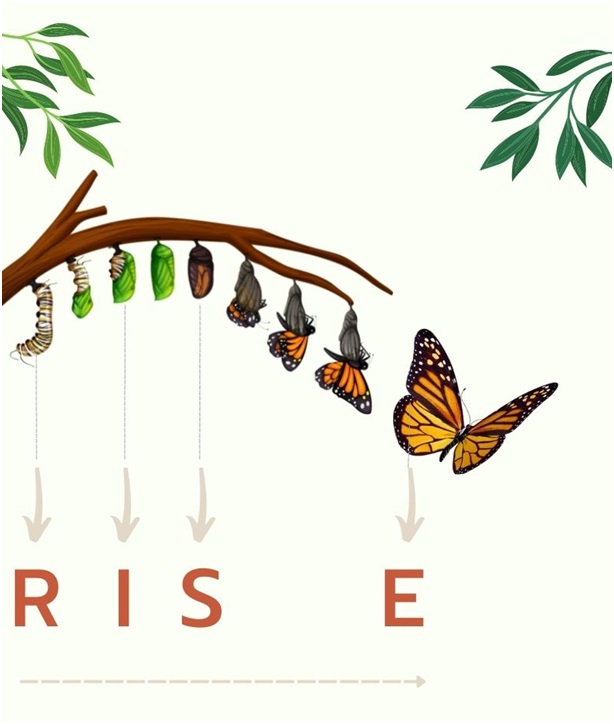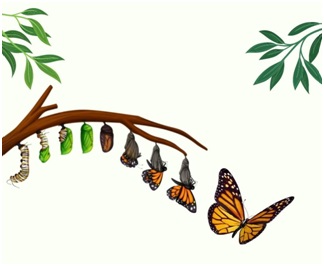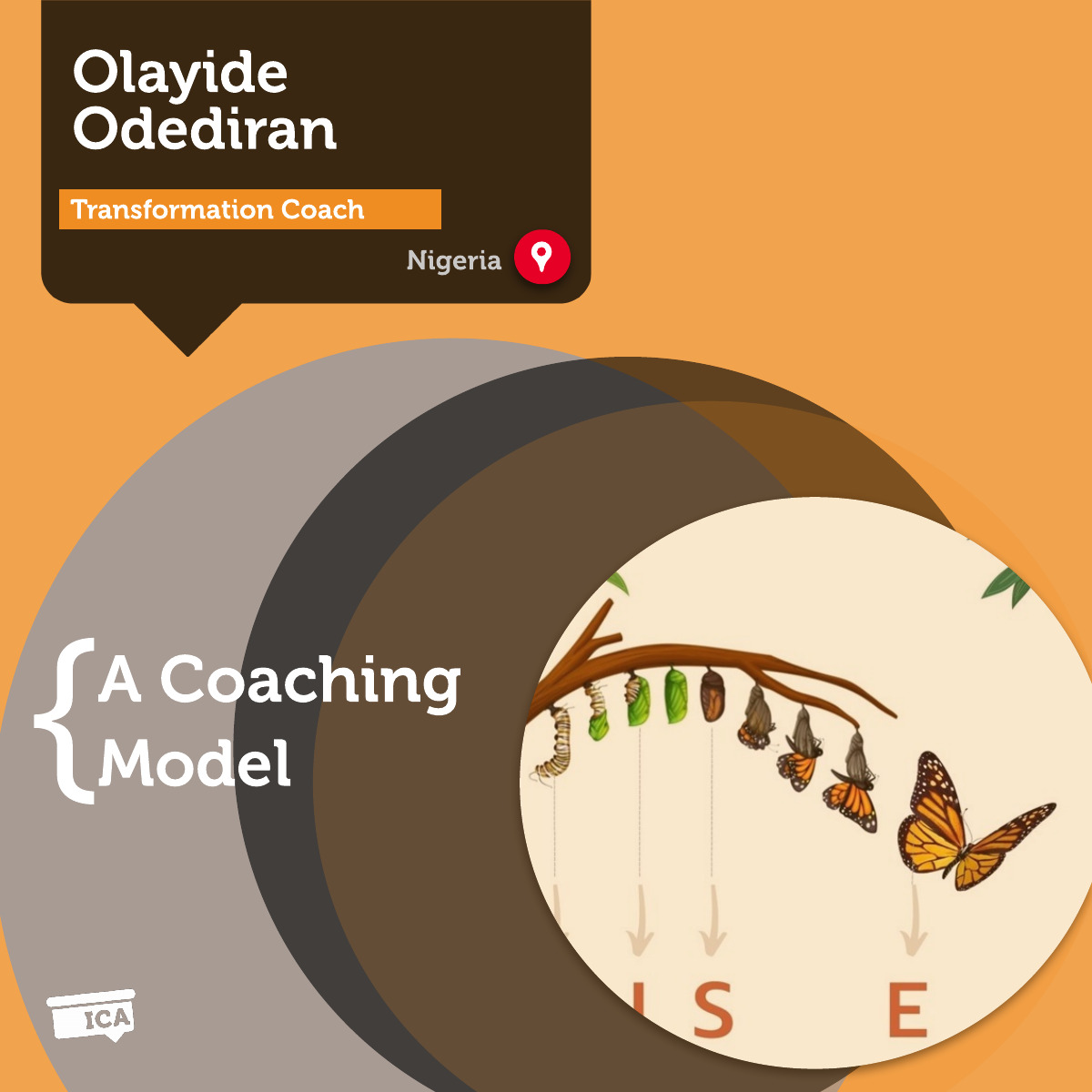A Coaching Model By Olayide Odediran, Transformation Coach, NIGERIA

RISE – A Stage Where They Want to Grow
In his book, “Soul Mates“, Thomas Moore recognizes the spirit as
that part of us and part of our life that wants more, that wants to transcend, that wants to grow, that wants to move into a better world, that wants to improve ourselves.
This concept is central to my coaching niche – transformation – as it focuses on clients when they are at a stage where they want to grow; when they want more from their lives; when they want to improve themselves when they want to evolve.
Many clients in this phase express frustrations about choices, decisions, and circumstances that ‘don’t align with who they are’. The frustrations may become more intense because they sometimes have also done the necessary work of truly examining their next steps. However, it is often the case that although they desire a next phase that speaks to who they are, they don’t do the required work on there – their values, beliefs, assumptions, principles, and perspectives – to bring this vision into the realities of every day. They may instead, delve into an intellectual analysis of their options and steps only, which inevitably leads to new frustrations. Signs of this pitfall become evident when the client comes off as already knowing the entirety of their challenge and blind spots and knowing the solutions. In other cases, the client is likely to be attached to labels of who they are, who they want to be, what they are, what roles they play, or what they want to achieve, again without examining themselves. What is more likely the case is that they have been through an intellectual exercise that has not translated to a change in their belief system, and therefore will not yield the outcome they truly desire.
One explanation for this deviation between the desired state, the effort to manifest the desired state, and reality, can also be borrowed from Thomas Moore. In his words, ‘the spirit likes to be detached and seek transcendence’, as may be observed in a hurried attempt to ‘figure out the next phase, ‘solve it, or ‘get on with it. This is, in my view, sufficient for the visualization of change, but it is not enough for the process of change to occur. The process of change requires a commitment to the ordinary; it requires accountability to the daily elements and effort of change – little tasks and activities that lead up to the desired goal. In other words, it requires being present in the weeds and in the true process of change and metamorphosis.
My coaching model to facilitate true transformation borrows from the life cycle of the butterfly, focusing on the caterpillar, chrysalis/pupa, and the butterfly. The acronym for this model is RISE.
RISE Explanation

Phase 1
R – Readiness
The Caterpillar
| Butterfly Process | Client Process | Essential Coaching Elements |
| The caterpillar spends most of its time eating and consuming food in its environment to form the essential elements of its being. | The client spends most of their time absorbing influences, values, beliefs, assumptions, and expectations amongst others – essential elements of the fabric of their being – from their environment (upbringing; relationships, etc) | |
| Hormonal changes occur and the caterpillar loses interest in feeding. | Readiness for change occurs and the client loses interest in absorbing their identity from external influences. The client desires a new state that truly honors their full potential. |
A client must demonstrate readiness for change and for the coaching process. A client must be willing and ready to define the desired goal. |
| When it is time to become an adult, the caterpillar finds a sheltered safe spot in which to pupate where it transforms itself. | When it is time for the client to begin their transformation process, they seek out a ‘sheltered, safe spot’, in the form of a transformation coach. |
Elements of a ‘safe space’ for a client are trust, no judgment, acknowledgment, presence, and empathy. The ‘sheltered spot’ for the client is a coaching environment that allows and embraces space from the external influences in the client’s reality, so that the influences may be assessed objectively for growth to begin. Elements include powerful questioning, active listening, creating awareness, and reframing perspectives. This sheltered, safe spot is bound and protected by the coaching agreement, coaching ethics, and the ICF competencies actualized by the coach. That the caterpillar transforms itself is indicative of the fact that the client must invest in himself and put in the work for his own development, albeit with the support of the coach. |
Phase 2
I – Introspection
S – Self Awareness
The Chrysalis/ Pupa – Metamorphosis
The actual process of metamorphosis can be a painful one. For a person to really embrace change and evolve, he must take a close, hard look at legacy belief systems and values that underpin his decisions; judgments, and assumptions made about self, others, and life, and be willing to cast them away for the opportunity to rebuild anew. This can be challenging and can bring on anxiety, fear, and doubt. In this phase, my work, as the coach, is to bring the following quote to life for my evolving client:
I know this transformation is painful, but you are not falling apart; you are just falling into something different, with a new capacity to be beautiful – William C Hannan
Bringing this quote to life asks that I help my client reframe their perspective from fear to expansion. It requires that I help my client replace their fear of change and growth, with a sense of adventure. This way, they can expand, explore, be unbounded, and truly manifest what it is they desire.
| Butterfly Process | Client Process | Essential Coaching Elements |
| The change inside the chrysalis is gradual. The caterpillar’s body digests itself from the inside out. | The change in the client is also gradual. The client must digest or ‘process’ essential elements of the fabric of their being. They must do away with limiting beliefs and perspectives that no longer serve them, and ‘flip it’ to a more empowering stance that serves their development. |
Responsibility, action, trust, accountability, commitment, gratitude Redefinition of values and life purpose Truth |
Phase 3
E – Evolution
The Butterfly – The Magical Transformation
| Butterfly Process | Client Process | Essential Coaching Elements |
| The caterpillar is attacked by the same sort of juices that it used in its earlier life to digest food. Many of the organs are hidden in the caterpillar and they take a new form with the chrysalis. | Just as the caterpillar is attacked by the same juices as before, the client must also face the challenges presented by the values/beliefs/ assumptions they used to hold and then form a ‘new self’. This new identity will take what is of use from what it used to be, build on reframed perspectives, and create a new set of essential elements of their being for their desired state. Through this, the client’s ‘wings’ are formed, and they can then break free of their figurative protective pupa – the coaching agreement (which has now served its purpose) – so that they can fly and attain their full potential like the beautiful butterfly. |
Responsibility, action, trust, accountability, commitment, gratitude Redefinition of values and life purpose Truth |

Learn How to Create Your Own Coaching Model
Your Coaching Model reflects your values,
philosophies and beliefs and must communicate who you will coach
and the problems you will solve. Read more about creating your coaching model
References
Moore, T. (2016) Soul Mates: Honouring the Mysteries of Love and Relationship. Harper Perennial
Wisconsin Pollinators: Butterfly Life Cycle: Chrysalis
